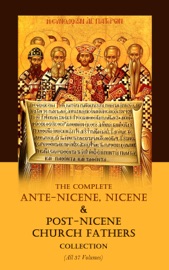This is the age of the Graeco-Latin church, or of the Christian Fathers. Its field is the countries around the Mediterranean Western Asia, Northern Africa, and Southern Europe just the theatre of the old Roman empire and of classic heathendom. This age lays the foundation, in doctrine, government, and worship, for all the subsequent history. It is the common progenitor of all the various confessions.
The Life of Christ and the Apostolic Church are by far the most important sections, and require separate treatment. They form the divine-human groundwork of the church, and inspire, regulate, and correct all subsequent periods.
Then, at the beginning of the fourth century, the accession of Constantine, the first Christian emperor, marks a decisive turn; Christianity rising from a persecuted sect to the prevailing religion of the Graeco-Roman empire. In the history of doctrines, the first oecumenical council of Nicaea, falling in the midst of Constantine’s reign, A.D. 325, has the prominence of an epoch.
Here, then, are three periods within the first or patristic era, which we may severally designate as the period of the Apostles, the period of the Martyrs, and the period of the Christian Emperors and Patriarchs.
The middle age is variously reckoned from Constantine, 306 or 311; from the fall of the West Roman empire, 476; from Gregory the Great, 590; from Charlemagne, 800. But it is very generally regarded as closing at the beginning of the sixteenth century, and more precisely, at the outbreak of the Reformation in 1517.
Gregory the Great seems to us to form the most proper ecclesiastical point of division. With him, the author of the Anglo-Saxon mission, the last of the church fathers, and the first of the proper popes, begins in earnest, and with decisive success, the conversion of the barbarian tribes, and, at the same time, the development of the absolute papacy, and the alienation of the eastern and western churches.
This suggests the distinctive character of the middle age: the transition of the church from Asia and Africa to Middle and Western Europe, from the Graeco-Roman nationality to that of the Germanic, Celtic, and Slavonic races, and from the culture of the ancient classic world to the modern civilization. The great work of the church then was the conversion and education of the heathen barbarians, who conquered and demolished the Roman empire, indeed, but were themselves conquered and transformed by its Christianity. This work was performed mainly by the Latin church, under a firm hierarchical constitution, culminating in the bishop of Rome. The Greek church though she made some conquests among the Slavic tribes of Eastern Europe, particularly in the Russian empire, since grown so important, was in turn sorely pressed and reduced by Mohammedanism in Asia and Africa, the very seat of primitive Christianity, and at last in Constantinople itself; and in doctrine, worship, and organization, she stopped at the position of the oecumenical councils and the patriarchal constitution of the fifth century.
In the middle age the development of the hierarchy occupies the foreground, so that it may be called the church of the Popes, as distinct from the ancient church of the Fathers, and the modern church of the Reformers.
In the growth and decay of the Roman hierarchy three popes stand out as representatives of as many epochs: Gregory I., or the Great (590), marks the rise of absolute papacy; Gregory VII., or Hildebrand (1049), its summit; and Boniface VIII. (1294), its decline. We thus have again three periods in mediaeval church history. We may briefly distinguish them as the Missionary, the Papal, and the pre- or ante-Reformatory ages of Catholicism.



















































